Who is Chanel?
- 17th Aug 2020
- 2261
- 0

A classic LBD is a top 5 wardrobe staple. Shoulder bags save women everywhere the pain of carrying totes and losing our wallets. Women are no longer forced to wear corsets and sacrifice their health for fashion. Jersey t-shirts and dresses are our most comfortable friends. Was there a world where these basic comforts didn’t exist? How did that world become what we know today?
There are a few names in the world as ubiquitous as Chanel. One doesn’t have to be religiously devoted to fashion to know who they are. The iconic “CC” logo can be found in the wardrobes of every luxury consumer. Every influencer has the ivory and black shopping bags on display for their feed. From your brunch buddies at Soho house to the Kar-Jenners, everyone is seen flaunting their Chanel belts and bags. This is the story of the icon behind it all, and the legacy that carries today.
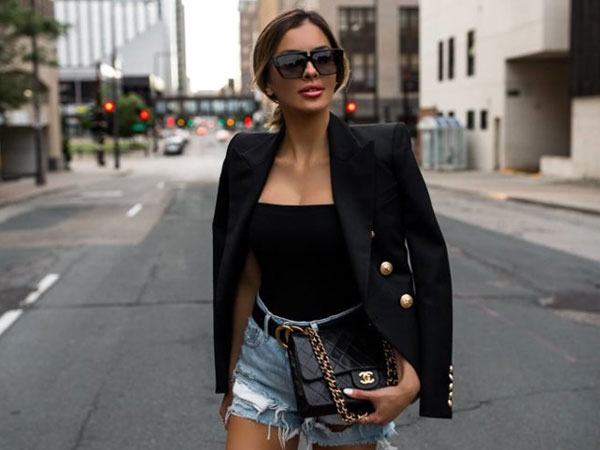
Women in 19th century France were plagued with fashions of the Belle Époque and the British Edwardian Era which necessitated an hourglass figure of a woman’s body. This meant that women would have to wear corsets and crinoline which were not only uncomfortable but were increasingly perceived to be health hazards. In a world being swept by the first wave of feminism and in the face of a war and disease stricken society, Chanel found the perfect solution for a newly liberated woman.
Gabrielle “Coco” Chanel began working as a milliner in 1908, using financial and social capital that she received from Étienne de Balsan, her romantic partner at the time. The women in Balsan’s circle began showing interest in her work and she soon became sought after. She then opened a store in the resort town of Deauville, selling exclusive clothing in addition to her hats. She rapidly gained popularity and established another boutique in Biarritz, France. The striking contrast of her designs with existing fashion set her apart and catapulted her into prominence. What exactly was this contrast?

Coco conceptualised a modern woman, a woman who was comfortable and free to move. This was the breath of fresh air that French women were in dire need of. She realised how suffocating and overwhelming women’s fashion had become with corsets, petticoats, crinoline and multiple layers of cloth. And she decided to drop it all. Taking inspiration from men’s sportswear, she created a pared down, uncluttered look with straight lines and boxy silhouettes. Gone was the fuss and frump — a Chanel woman could breathe freely. Chanel was rumoured to frequently wear her partner's clothes as she found them to be more comfortable. Unsurprisingly then, she took inspiration from her partner’s sportswear and menswear and blurred traditional ideas of masculinity and femininity. The First World War created a perfect market for Chanel. Women’s participation in the war solidified their preference for movement friendly clothing.
In 1916 a French textile industrialist gave Chanel exclusive access to the jersey fabric, which would prove to be a crucial reason for her success. Staying true to her principle of “luxury must be comfortable, otherwise it is not luxury,” she integrated this fabric to create simple sporty designs. The soft breathable fabric was the perfect complement for Chanel’s designs, gracefully flowing over the silhouette of one’s body. “She invented the genre pauvre, or poor look,” wrote TIME magazine in 1957. This “poor look” attracted high end customers looking to drop the claustrophobic fashions of the pre-war times, and she soon found herself at the helm of an empire employing 2000 workers. This empire could only be sustained with external investment, which came to her through the launch of her now iconic No.5 perfume. She created a partnership with two businessmen Théophile Bader and Pierre Wertheimer and expanded her brand to include clothing, perfumes and accessories.
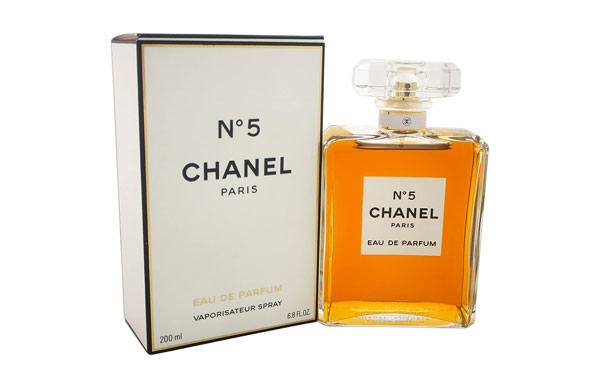
Chanel’s early life was spent in poverty, in an orphanage surrounded by shades of black and beige. While this monotony could crush a child’s spirit, Chanel was inspired by her experiences of poverty and the colors, or lack thereof, she grew up with. An article in L’officiel USA also cites her inspiration as “Gabrielle Chanel used her observations of the clothing of the Parisian employees and orders, characterized by black dresses with a white collar and cuffs to inspire her designs.” Chanel, who believed that luxury was about simplicity, took these influences and created the white-beige-black color palette, which is now the epitome of luxury.
In 1924, she debuted “Chanel’s uniform”, a three-piece suit with a slim skirt and collarless jacket. L’officiel writes, “The triptych skirt, pullover and cardigan thus became the first distinctive model of Chanel fashion, made especially in neutrals such as gray, beige and dark blue as well as the famous combination of black and white.” Chanel was introduced to Scottish Tweed, another material used for sportswear and using gabardine, tweed and the famous jersey, she created the signature look that the brand would forever be known by. The suit was given wide press coverage and caught the eye of influential women all around the world. A most notable iteration of the suit was a bright pink knit version worn by former First Lady Jackie O. in 1963, on the day of her husband President Kennedy’s assasination.
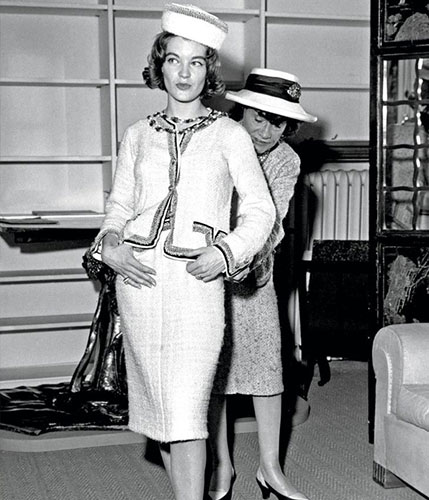
In 1926, an image would appear on Vogue’s cover — a woman wearing a string of pearls, pumps, a cloche and a low-belted black dress. The petit robe noir or Little Black Dress was another demonstration of Chanel’s genius. Vogue would rightly predict its becoming ‘a sort of uniform for all women of taste’. Prior to the 20’s or the “Jazz Age”, the color black was linked to servants and those in mourning, especially for widows in the aftermath of the war and Spanish Flu Pandemic. Chanel “seemed to have a special knack for turning traditionally unacceptable ideas on their heads,” Colin Bissett wrote for the Australian Broadcasting Corporation. She wanted this creation to be widely available and soon enough the dress was selling by the millions.
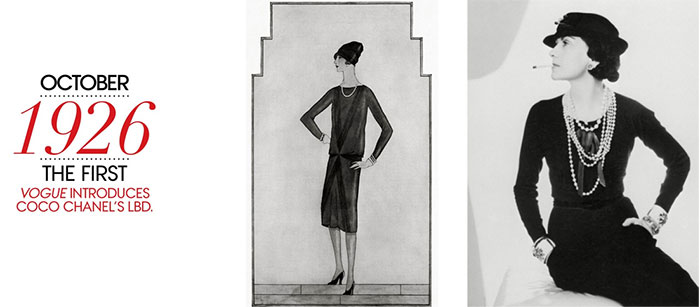
A last groundbreaking creation, the 2.55 bag was birthed in the 30’s. Tired of holding her clutch at all times, Chanel came up with the simple solution of adding a shoulder strap to her bag, which would later be replaced with gold chains by her successor Karl Lagerfeld. The name 2.55 is derived from a reproduction of the bag released in February of 1955 (2.55) which was made using the iconic quilted leather and was lined with burgundy fabric to supposedly represent the colour of Coco’s uniform during her stay at the orphanage. Chanel also tried her hand at manufacturing accessories, making costume jewellery as opulent as her dresses simple. Chanel was also a patron of the arts and is credited with transforming dancer’s costumes. As with her prêt-à-porter, she stripped dance costumes down to swimwear and sportswear and made dancer’s lives infinitely more comfortable.
The capture of France by Nazis and the Second World War brought forth a less pleasant side to Coco. She closed down all but the perfumes and accessories side of her business, which was now controlled by a Christian businessman, as Wertheimer had fled France. Chanel herself was a Nazi agent and was thus forced to flee France for 8 years post war. She returned in 1953 to find Dior’s New Look taking over the fashion scene, his opulence being used to combat the post-war gloom.
Now aged 71, it was thought that Chanel would see her decline. Yet, with the help of Wertheimer, she relaunched her business, and successfully so. She debuted a now staple of the house, the Knitted Chanel suit and collaborated to release black and white pearl strings to complement this suit. Of Dior’s “New Look” she said "Dior doesn't dress women, he upholsters them." Chanel died in 1971 and was briefly succeeded by her assistants before the takeover by Karl Lagerfeld.
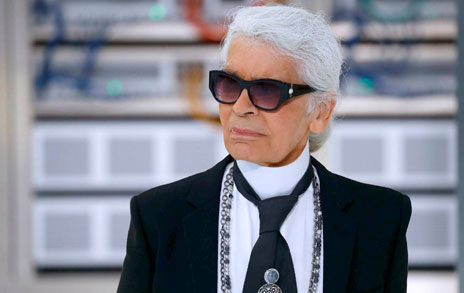
Karl Lagerfeld took creative control of the house in 1983 and remained until his death in 2019. He shared Coco’s vision of avant garde fashion, although the definition of avant garde would change with time. If Coco was a revolutionary, Karl was the revolution. If Coco created for the theatre, Karl created the theatre itself. He maintained the essence of the brand, the suit, the No.5, the 2.55 bag, the gold buttons and tweed, but he also moved the house forward.
While the suit had an older, established, high paying clientele, he sought to appeal to the younger generation. He slowly but surely pushed Coco’s vision. The suit was recreated in denim, given a punk twist. The tweed got a plastic makeover and was used for bralettes instead of cardigans. He made sure to keep up with the times instead of falling behind with a stuffy vision of the brand. His time at the house also saw the release of Chanel sports equipment and skis. He also did a limited reprise of the 2.55. Most importantly, he revived the “CC” logo, using it on bag clasps, on necklaces and earrings, as a print on fabrics.
Karl’s visionary influence saw Chanel rise to profits of $10 billion a year. Early on in his time at Chanel, the house opened up to 40 boutiques which sold everything from $200 perfumes to thousands worth of couture. Today, the brand has around 190 boutiques worldwide, with some products being available online.
In addition to Chanel, Lagerfeld also designed at Fendi and on and off at Chloe. Lagerfeld is one of the most influential figures of today’s luxury fashion world. Much before the image-dependent world of social media, Lagerfeld began to design palatial sets at the Grand Palais in Paris, transporting invitees into another dimension. A snow-covered winter wonderland, a terracotta “Villa Chanel”, a space station complete with a rocket ship which appeared to take off, icebergs and even supermarkets — his imagination knew no bounds. From sets, short films and even books he did it all. His muses ranging from Linda Evangelista to Willow Smith also challenged the house’s more conservative past. About his decisions, CR Fashion Book quotes him as saying, “Even if she never did it this way, it’s very Chanel, no?”
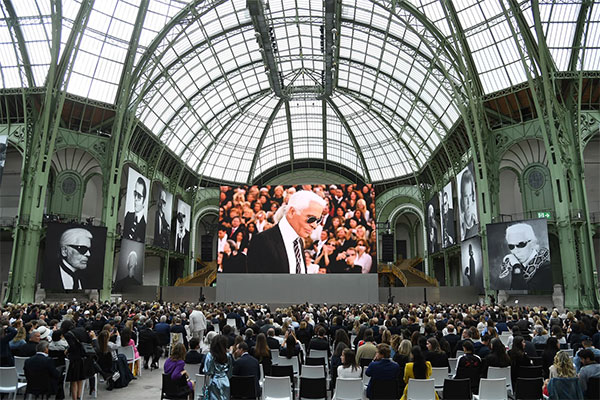
Chanel today is a paradoxical brand. It is as accessible as it is exclusive. While an aspirational consumer can afford to buy their makeup and skincare lines, and occasionally spring for a coveted bottle of No.5 or Coco Mademoiselle, owning a bag or even a wallet is a symbol of opulence and an impossibility for most. The iconic Boy Bag can cost upwards of $6000USD, while a 2.55 bag can cost upwards of $7000USD. This exclusivity is the reason why Chanel remains one of the most sought after brands for luxury consumers, even when compared with its contemporaries like Gucci, Louis Vuitton and Dior.
After the death of Karl Lagerfeld, Virginie Viard, his coworker of 30 years, has taken over as artistic director. Her latest show caused quite the controversy, with Tim Blanks writing for the BOF , “... the most striking thing about this show was how it polarised its audience. The word on a younger generation’s lips was "fresh." The more senior contingent was resolutely unconvinced. I rather fancied the lack of focus, the continental drift, the freedom of movement…” As the article is titled, her approach was “More Karl than Coco”. With the focus of the brand looking less clear, Chanel’s future hangs in the balance. Will Viard prove to be a force of her own, akin to her predecessors? Or will Chanel have to survive on its existing legacy? Will Viard be able to maintain the existing clientele? Is Chanel Coco, Karl or Viard? Only time will tell. For now, Chanel is here to stay.
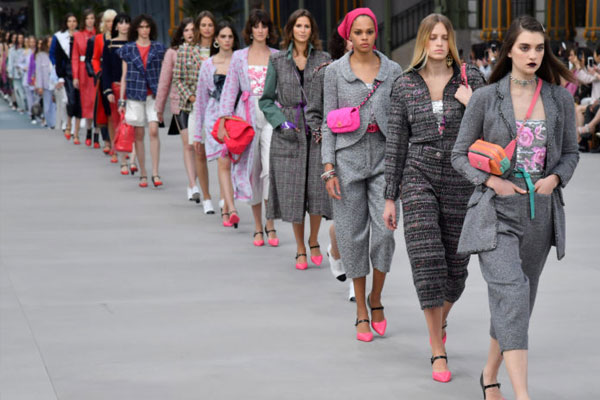
 Isha Deshmukh
Isha Deshmukh


Comments
No comments yet.
Add Your Comment
Thank you, for commenting !!
Your comment is under moderation...
Keep reading luxury post